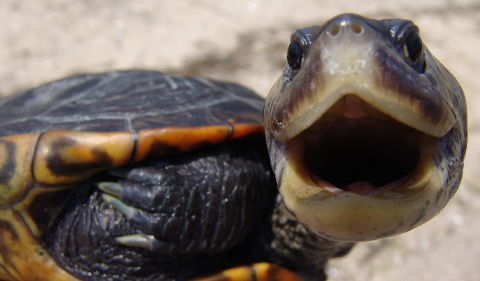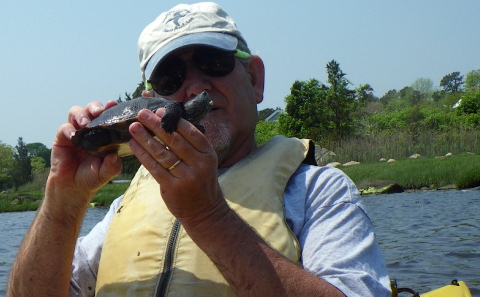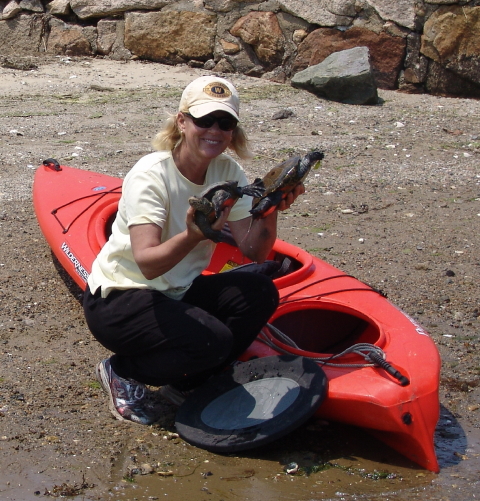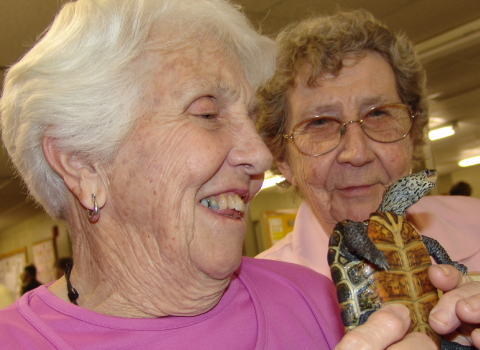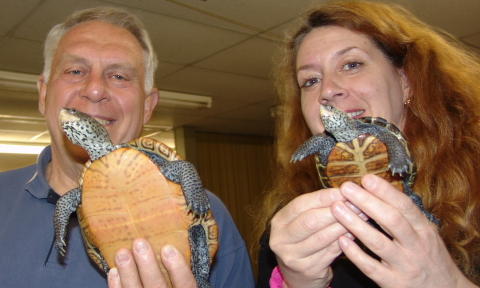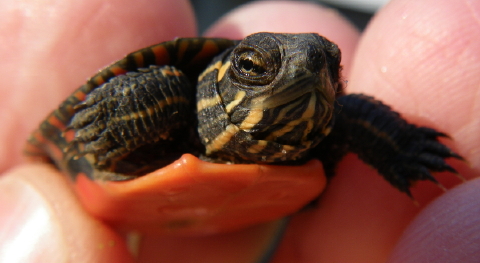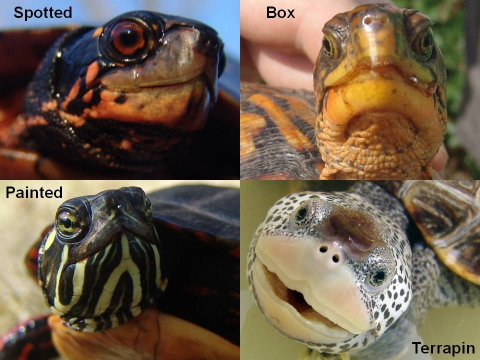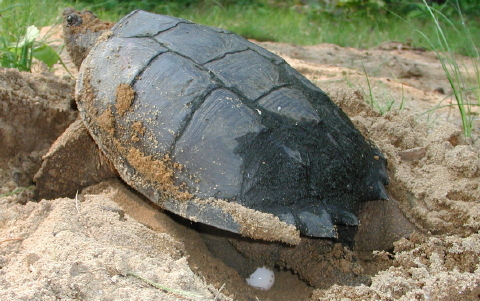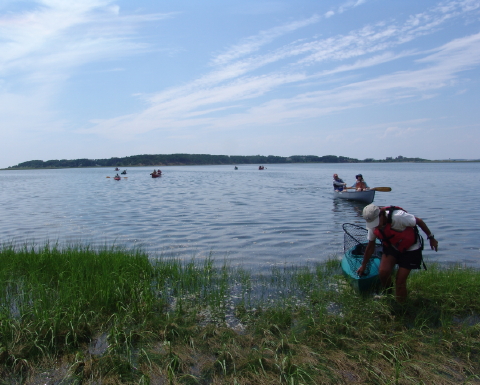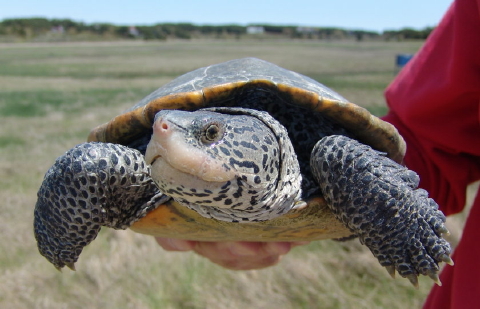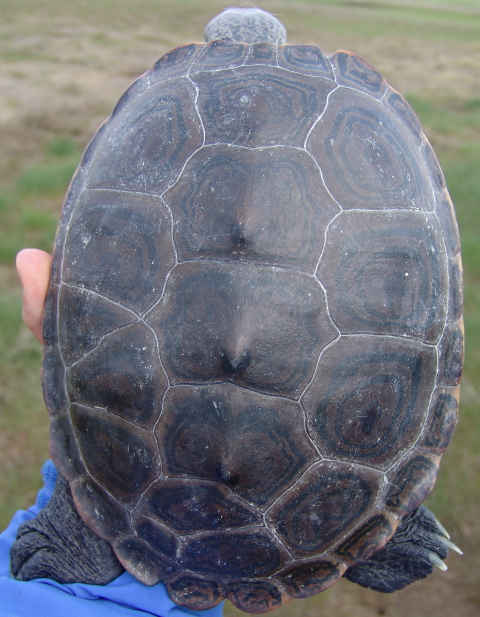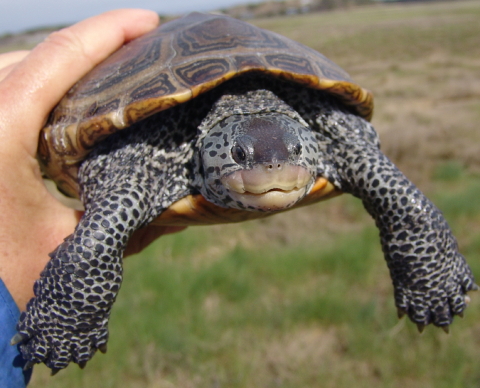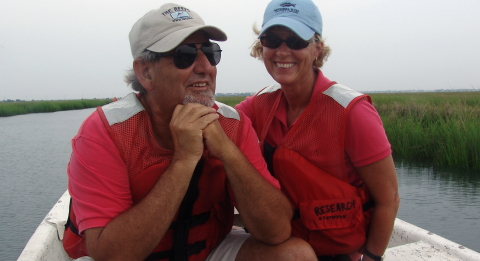Sippican Harbor Northern Diamondback Terrapin
Turtle Journal sampled the population of northern diamondback terrapins (Malaclemys terrapin terrapin) in Marion’s Sippican Harbor off Buzzards Bay this weekend. Since Marion is headquarters for the Turtle Journal team, we approach this survey each year with deep melancholy. After nearly a decade of research in Marion, each season confirms our findings that this population in Sippican Harbor is severely distressed and may be on the unalterable path toward extirpation within this estuary of Buzzards Bay.
Don Lewis Examines Diamondback Terrapin
How can we assess the relative health of this population of elusive turtles and its trend without being able to physically count each and every specimen? Random sampling and the capture-mark-recapture technique. Each spring after emergence from winter brumation, during the mating aggregation and before nesting dispersal, terrapins are briefly captured by researchers. All scientific data collection occurs in the field to allow immediate return into the wild with minimal disturbance. Each specimen is measured, weighed and assessed for overall health. If not previously captured, a turtle receives a unique identification number, so that we can follow its progress throughout its life. (ASIDE: In our principal research site, we have observed individual specimens for the entire 32 year length of the study!) Pictures of its carapace (top shell), plastron (bottom shell), profile, and any anomalies are taken and included in the research database.
Capturing Terrapins from Kayak
We have discovered over the last three decades that the most humane way and safest technique for capturing wild terrapins in our local conditions is by hand-netting from a kayak. For many of these terrapin populations, it also proves the most effective and efficient means to obtain unbiased samplings of both genders and all ages from juvenile to ancient. Other techniques, such as trapping, trolling and seining, have proven ineffective within Cape Cod estuaries and carry risks to the animals. Hand capturing female terrapins on nesting runs is highly effective and safe, but misses entire segments of the population. (ASIDE: An equally safe and effective capture technique is wading with hand nets, but unfortunately this method can only be used in very limited circumstances and areas … none of which apply to our Buzzards Bay estuaries.)
Sue Wieber Nourse Releases Large Female Terrapins
When sampling a healthy population with signs of recovery such as Wellfleet Bay on the Outer Cape, where effective long-term conservation measures have turned around a formerly distressed system, the percentage of recaptures in comparison to newly captured turtles remains well under 50% … even after 30 years of sustained research. In fact, with the new conservation measures initiated in 2000, recapture rates dropped significantly beginning in 2007 indicating a rebounding population. Unfortunately in Sippican Harbor, the recapture rates has been in the high 90% since the initial sampling nearly a decade ago and remain tragically high. Of the six individuals captured this weekend, for instance, five were recaptures with long histories since the beginning of the Marion research effort.
Six Terrapins Released into Sippican Harbor
Why are Sippican terrapins in trouble? The simplest answer is that humans have transformed the natural estuarine habitat of Sippican Harbor in ways that have been extremely detrimental to terrapins and the entire marine ecosystem. Salt marshes have been fragmented and filled in; marsh grasses mowed down & plucked out to increase bathing spots. Lush suburban lawns and playing fields have been extended to the waterline. Coasts have been armored in sea walls, and dirt roads and pathways have been asphalted or graveled. The coastline is sand-starved with protective barrier beaches eroding away. For terrapins, they have lost upland nesting, nursery habitat in salt marshes, and foraging areas. Human construction has intruded right into their once secluded mating aggregation. In the end, the numbers tell the tale. Very few recruits enter the system, and as the small existing population of turtles yields over time to human disturbance and old age, Sippican Harbor will be purged of this bellwether species.
